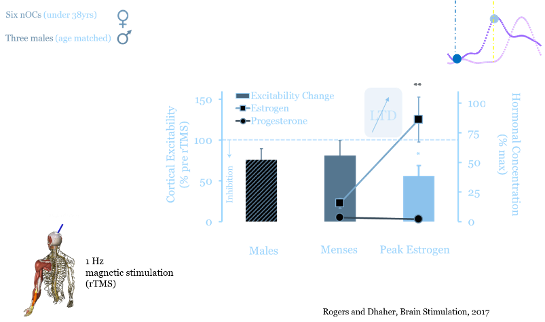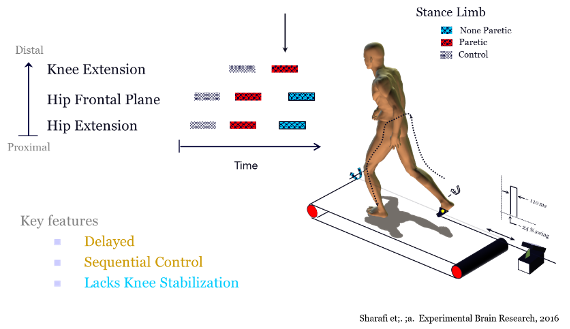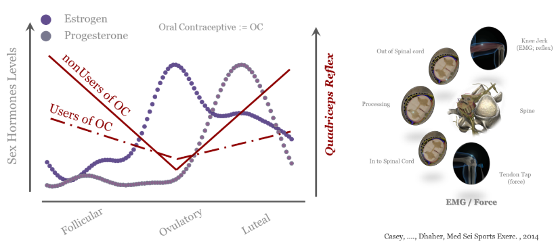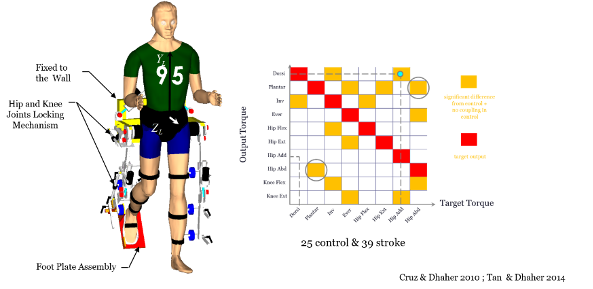Yasin Dhaher, Ph.D., Musculoskeletal Rehabilitation Research
Research Summary

Our research interest lies at the intersection of three disciplines, biomechanics, neurophysiology and endocrinology. The overall goal of these efforts is to develop improved intervention strategies for neuro and musculoskeletal rehabilitation. We employed a number of experimental tools including robotics and advanced neuro-probing techniques to understand lower limb impairments post lesion and developed several approaches to shape motor performance in these populations. Recently, we have been exploring the manifestations of impairments along the neuromuscular axis in young adults with implications to musculoskeletal injury and prime of life stroke. Examples of ongoing studies are:
Untangling of Lower Limb Synergies Post Stroke
The neural constraints underlying hemiparetic gait dysfunction are associated with abnormal kinetic outflow and altered muscle synergy structure. Recent evidence from our lab implicates the lesioned hemisphere in mediating the expression of coupled hip adduction and knee extension synergy, suggesting a role of cortical networks in the regulation of lower limb motor outflow post stroke. In context, research activity in our group has focus down exploring the contribution of the ipsilateral and contralesional hemispheric contributions to the expression of the lower limb kinetic synergies after stroke. While a prevailing view of driving lesioned hemisphere disinhibition for upper limb recovery seems expedient, presuming analogous lower limb neuromodulation may require further examination for lower limb rehabilitation. Our findings provide an important step towards this goal. Please see exemplar results from prior publications below.
Exploring Sex Effects in Rehabilitation Medicine
Whether to prevent musculoskeletal injuries, or to recover from stoke, sex-specific hormones affect the entire person. While traditional rehabilitation has generally considered impairments associated with the musculoskeletal and the nervous systems as separate and discrete problems, our ground-breaking approach is the first of its kind to examine how cyclically changing hormone levels impact the full neuro-muscular axis - from muscle to brain. We aim to examine how hormone state affects state-of-the-art rehabilitation methods yet to be employed in patient care - such as non-invasive brain stimulation - as well as traditional therapies already implemented in the clinic - such as treadmill training. Together with establishing simple methods to track how hormone flux is altered in injury and disease, our approach would allow for timing therapy to the most efficacious days in a woman's cycle. Please see exemplar results from prior work in this space
Current Grant Funding
R01 AR06976-03 Dhaher(PI) 09/01/19-04/30/23 NIH-NIAMS/NICHD
EMRSHN: Exploring the modulatory role of sex hormones along the neuromechanial axis in females.
The goal of this project is to determine the hormonal regulation of the different constituents along the neuromuscular axis. Data gleaned from this study could inform the optimal timing of implementation of neuromuscular retraining.
Illustrative examples of results:




